If you’re reading this, then you’re probably a skier or snowboarder, and skiers / snowboarders are generally: somewhat sporty, happy challenging themselves, not averse to the occasional dose of adrenaline, like the outdoors and, in particular, like being in the mountains.
If any, or all, of these apply to you, then maybe you’re looking for a way to spend some time doing an activity in the summer months that fills the gap in the year left by winter sports?
How about climbing? It’s a great activity if only because: It gets you outside, it gets you active and, given the right approach, it gets you into the mountains. That’s enough motivation right? Now you just need to choose what type of climbing you want to do.
There are different types of climbing and Zermatt is a great place to try, practice or perfect them all!
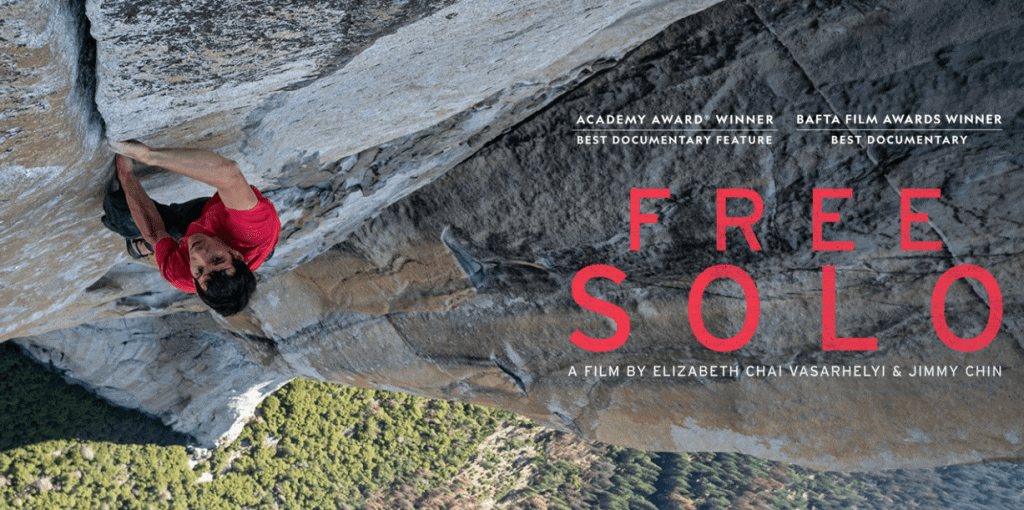
Free soloing
Ok, a terrible example to start off with, but I only put it here as many people may have come across the film Free Solo with Alex Honnold. This is when you climb without any ropes and without any room for error. Only attempted by climbers who are experienced, talented, confident and unhinged.
Even if you have no interest in climbing this film is a good watch, the dedication required to achieve a goal is inspiration for all. (and let’s not forget the people who filmed it! Find out more about the film here. Alex Honnold’s TED Talk on the climb is really good too.
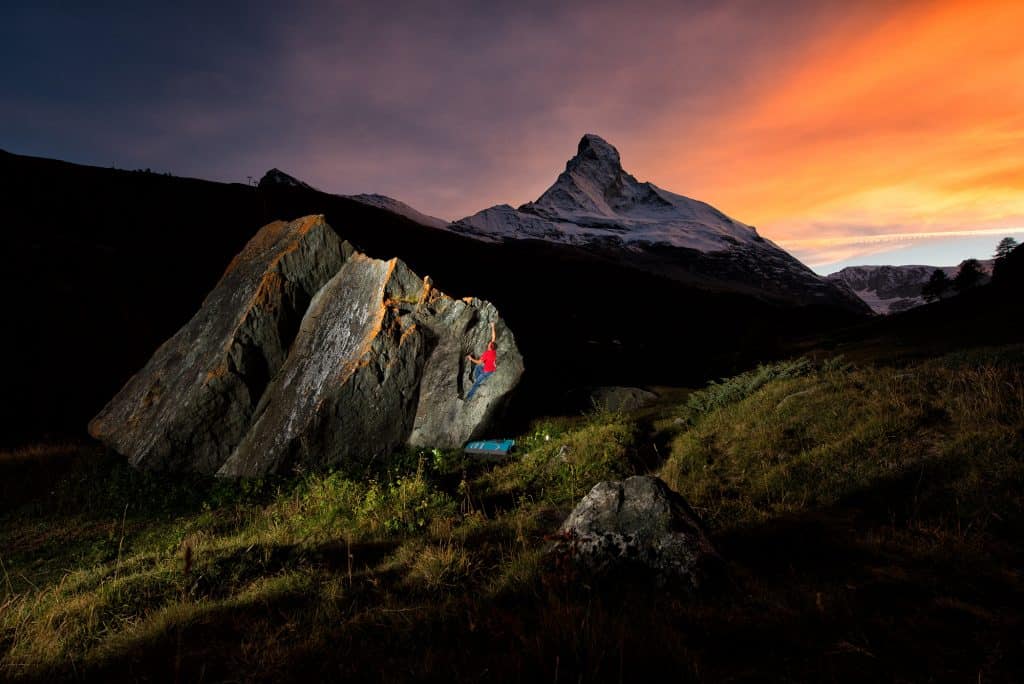
Bouldering
Also climbing without ropes but much lower down. A great way to get a feel for rock and learn some climbing moves.
Equipment: Very little kit is involved. Just a pair of rock shoes and some chalk to keep your hands grippy. Boulderers normally use mats and ‘spotters’ if anything they’re climbing is more than a metre or so off the ground.
In Zermatt: You can try bouldering at the Eschelbalmen climbing area (can you complete the right to left traverse without touching the ground?). There are also a couple of large rocks at Furi and Blatten that you can boulder on.
Top roping
This is the safest form of climbing. You ascend a rock face while attached to a rope. The rope goes to a secure anchor at the top of the climb and back down to a belayer on the ground. The belayer keeps the rope tight such that, should you let go of the rock, the rope immediately takes your weight and you don’t fall anywhere. It’s a great confidence boost for beginners, or anyone climbing a route that is at the limit of their ability. When you reach the top of a climb, your belayer lowers you slowly to the bottom where you started.
Equipment: The shoes are the same as for bouldering but you’ll also need harnesses, rope, karabiners and belay device. As well as some expertise how to set up and manage the top rope system.
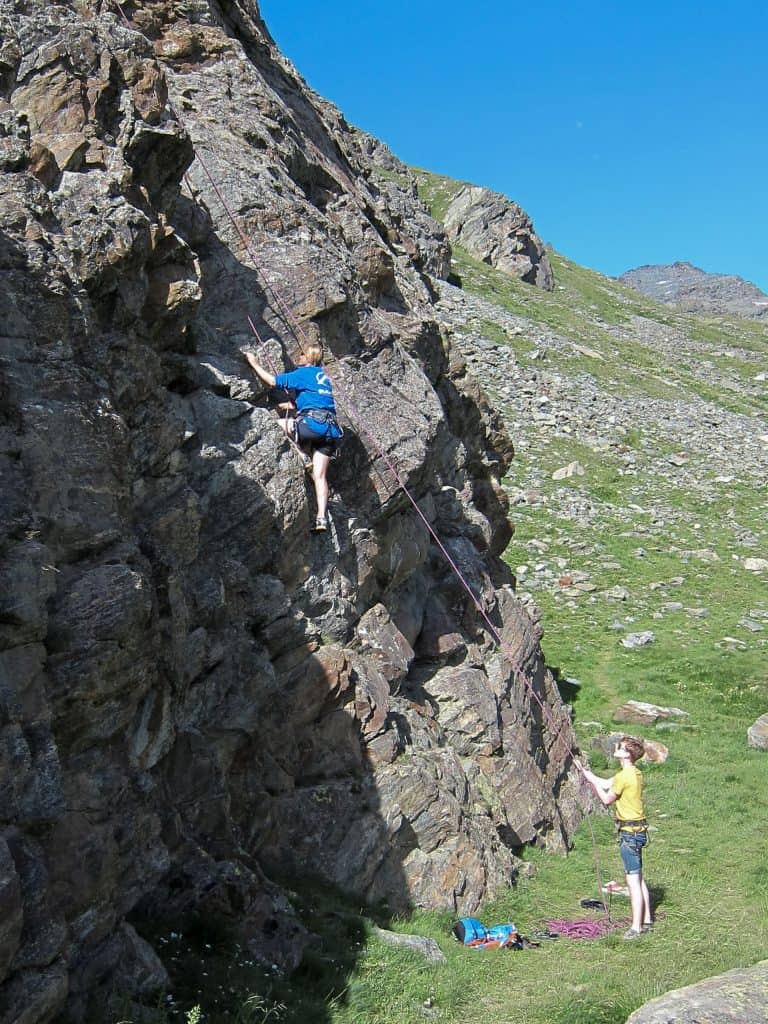
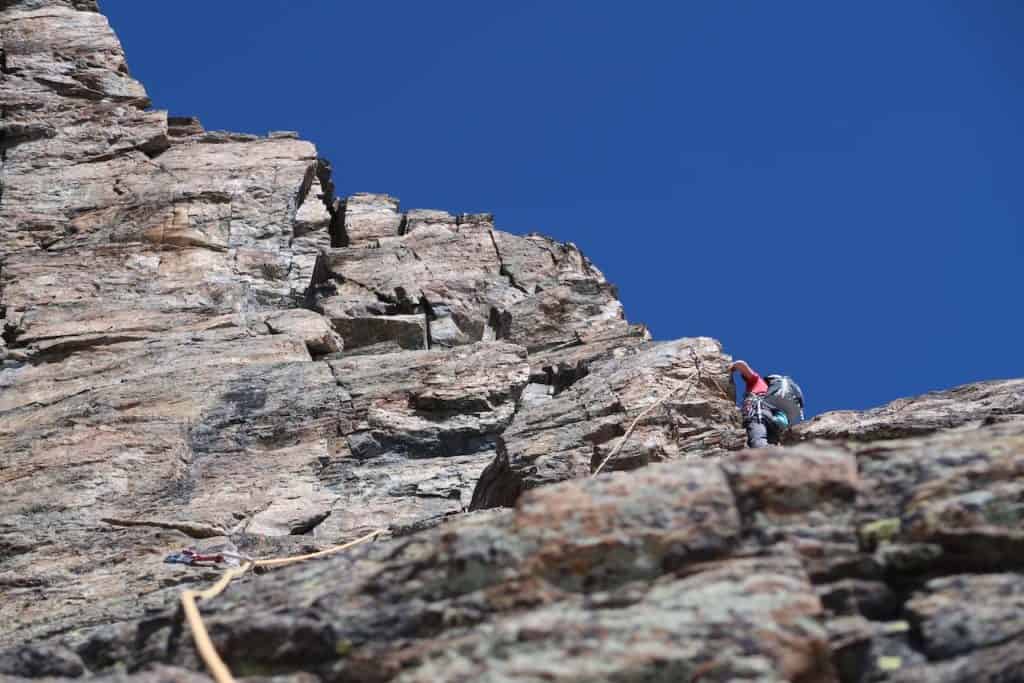
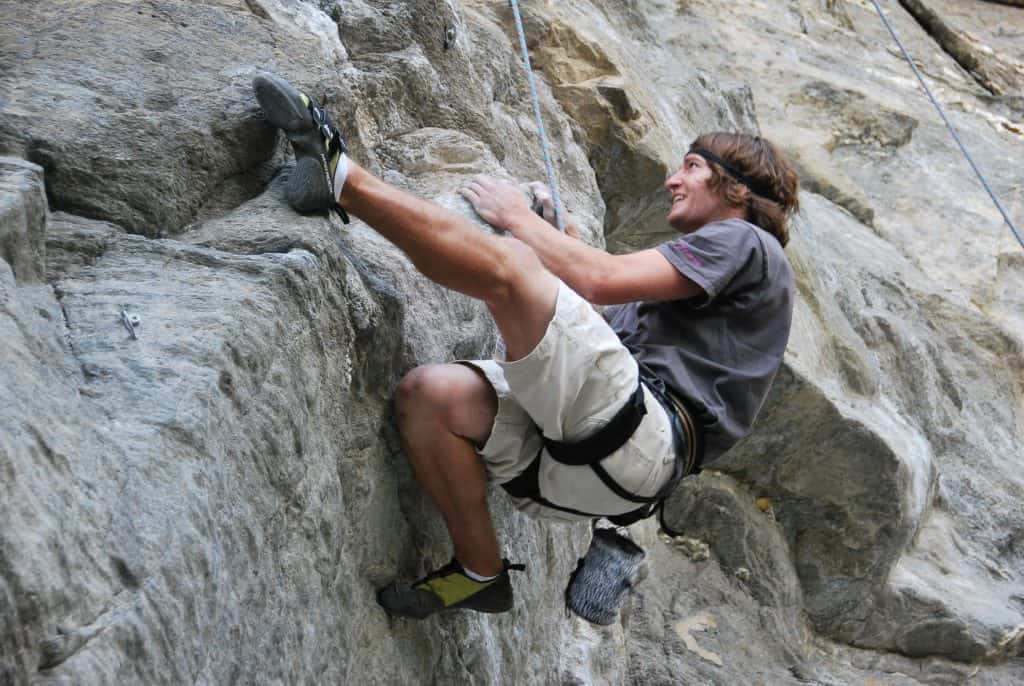
Sport Climbing
This is a wider definition of climbing (which actually includes top roping). When sport climbing, you can also ‘lead climb’. In this case, you’re attached to your belayer by rope but you ascend from the base of the climb while clipping the rope to pre placed permanent ‘bolts’ en route as protection. Bolts are drilled into the rock and have a metal attachment that a ‘quick draw’ can connect to and be similarly attached to the rope. This means you can fall back down past your last piece of protection but, if you’ve done it right, the rope comes tight and halts your fall before you reach the floor. Again, when you reach the top of a climb, your belayer lowers you back to the bottom.
Equipment: As for top roping but lead climbing also includes the quick draws needed to secure a climber as they ascend.
In Zermatt: There are lots of sport climbing areas with a wide range of climbing grades. Eschelbalmen is the easiest accessible area and has 20+ routes ranging from beginner to expert (grade 3 to 7+). Also check out the routes below the Edelweiss restaurant, above Furi on the way to the Glacier Garden and behind the Fluhalp hut.
Trad climbing
Trad (traditional) climbing is much like sport climbing but there are no bolts drilled into the rock. In this case, you must place your own protection (gadgets like slings, nuts and jamming devices) to keep you stay safe as you ascend. These are removed by the second climber so no trace is left on the rock.
Equipment: Trad climbing involves more kit (the pieces needed for protection in place of the bolts) and much higher levels of knowledge in order to make safe placements of gear for protection.
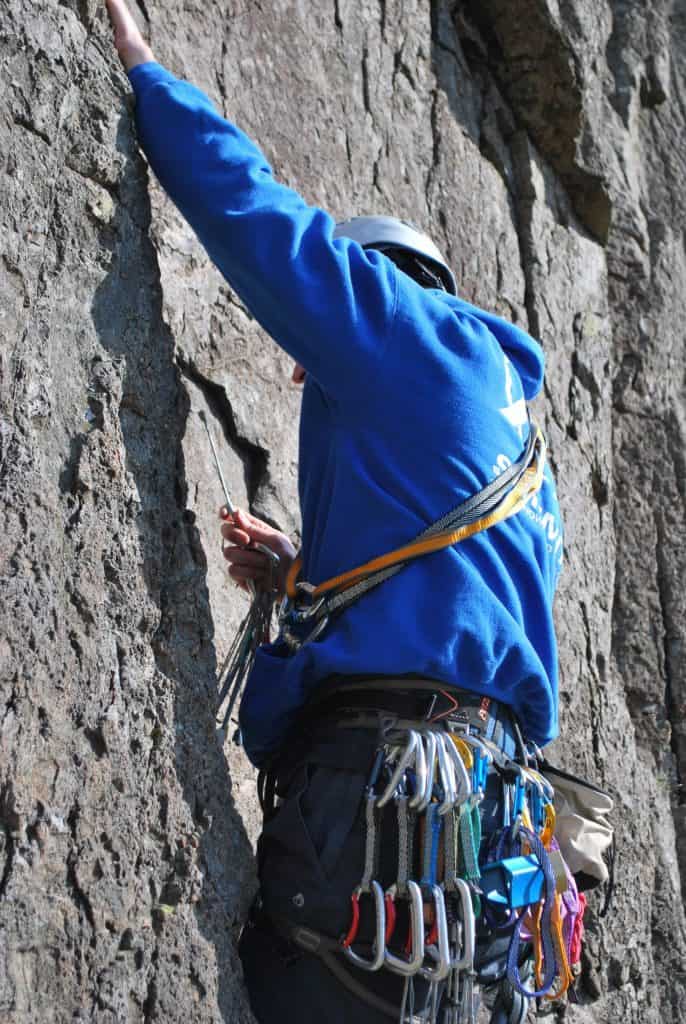
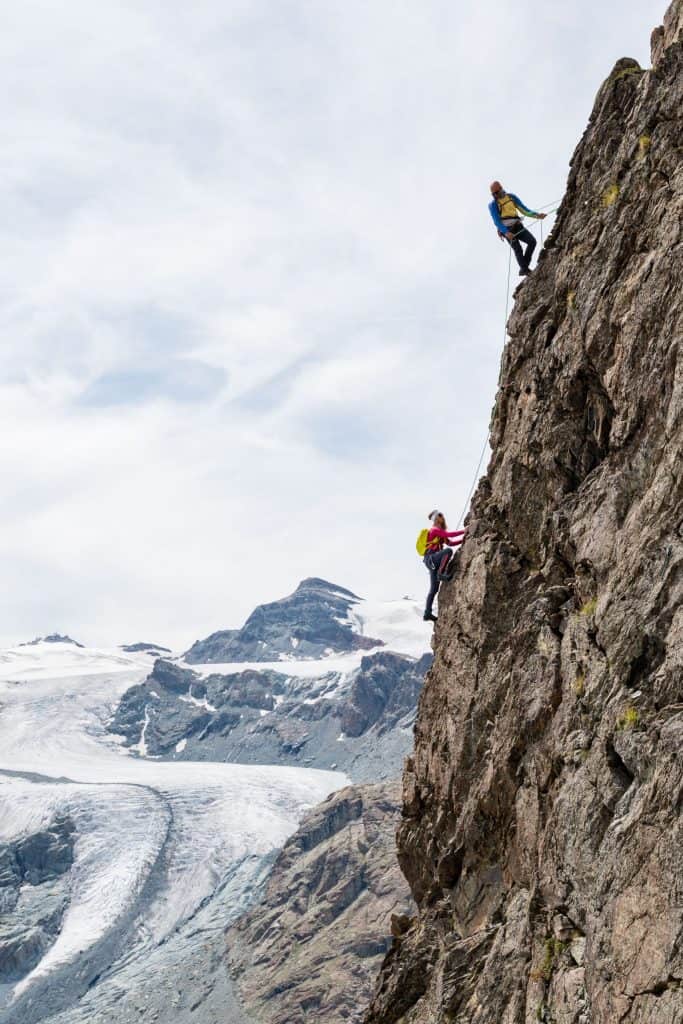
Multi pitch climbing
Multi pitch climbing can be done in sport or trad style and, once you reach the top of a pitch, your partner climbs to meet you rather than lowering you back to the ground. You can then repeat the process to move further up the rock. In this way, climbers can safely ascend large faces and reach mountain peaks. Check out the film Dawn Wall for an awesome example of multi pitch climbing.
Equipment: Largely the same as for sport or trad climbing but some more expertise is required to stay safe as you move higher up.
In Zermatt: The classic place to multi pitch climb is the south face of the Riffelhorn. A fantastically airy place to climb with amazing views of our local mountains and the glaciers beneath you.
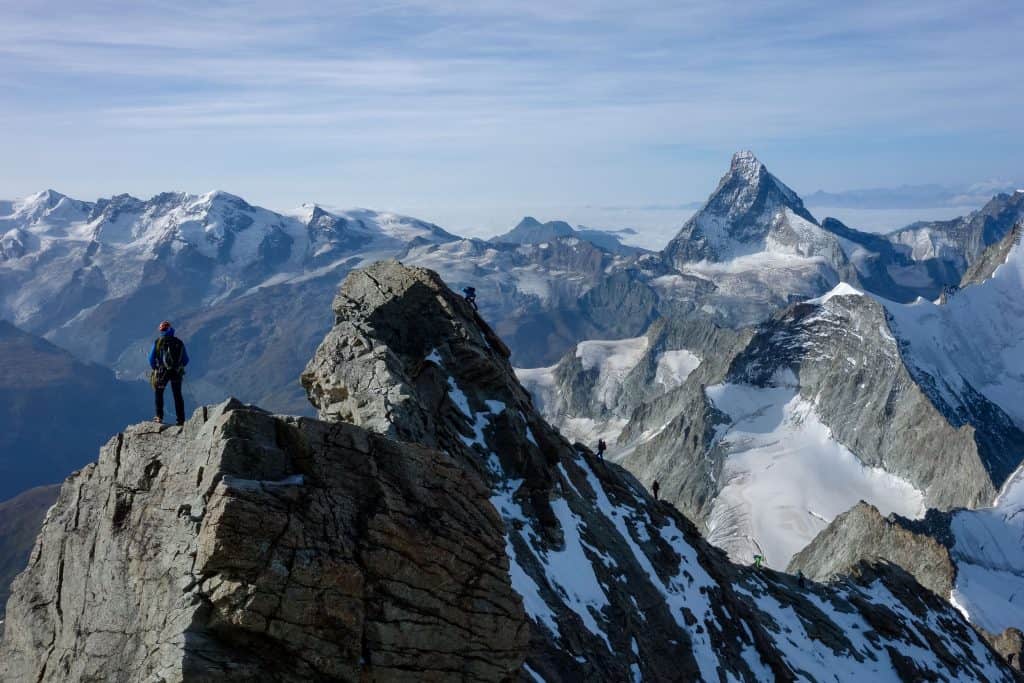
Mountaineering
This is the oldest style of climbing. It is the most adventurous and involves numerous different skill sets from trad climbing, to ice climbing to glacier travel. Mountaineering days are usually longer, peaks are higher but the actual difficulty of climbing is generally lower.
Equipment: Mountaineering requires another range of kit (crampons and ice axe for instance) as well as a much broader skillset.
In Zermatt: Our 39 4000m peaks are a playground for mountaineers! Although not the highest or hardest, the Matterhorn is a big prize that should be on your list!
Keen to have a go?
However you choose to start climbing, it’s well worth getting some instruction. This will give you the basic skills to move better on the rock but, more importantly, the knowledge of the processes needed to make sure you’re staying safe as you climb. There are many courses you can attend to learn the basics. Alternatively, you can hire a mountain guide to take you on climbing days and pick their brains along the way. A lot of guides see their job as simply keeping you alive so finding one who is also prepared to teach you some skills makes a big difference. Here in Zermatt: Book a guide at the Alpine Centre and let them know exactly what you want to achieve.
With basic safety knowledge and an investment in a bit of equipment, you can make the mountains your playground in summer as well as winter. See you on the rock.

